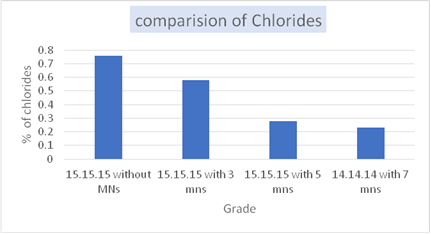Introduction
With the global population projected to reach 9.5 billion by 2050, the agriculture sector must significantly increase food production. Fertilizers remain essential for supplying vital nutrients to crops; however, improper fertilizer use—either excessive or insufficient—has led to declining soil health and environmental concerns, including nitrogen and phosphate imbalances and ammonia emissions contributing to air pollution.
Continuous overuse of mineral fertilizers reduces soil organic matter, hardens soil texture, depletes essential nutrients, and increases environmental risks through leaching and runoff. Therefore, knowledge-based fertilization strategies are essential to mitigate soil degradation, avoid secondary salinization, and promote sustainable agriculture.
Foliar and root fertilization techniques offer different advantages, with foliar applications emerging as an effective method to meet micronutrient requirements efficiently, particularly at critical growth stages. Water-soluble fertilizers (WSFs) provide faster nutrient availability, reduced application rates, and compatibility with modern irrigation systems. Nonetheless, the physicochemical properties of WSFs—such as moisture content, caking tendency, solubility, and compatibility—are crucial for their performance, handling, and storage stability.
This study compares the physicochemical properties of different WSF grades to identify optimal formulations for enhanced plant nutrition and ease of use.
MATERIALS AND METHODS
Fertilizer Samples
The following formulations were evaluated:
- 15-15-15 without micronutrients (commercial standard),
- 15-15-15 fortified with three micronutrients,
- 15-15-15 fortified with five micronutrients,
- 14-14-14 fortified with seven micronutrients.
Physicochemical Analyses
- Moisture Content: Determined by drying 5 g of fertilizer in a vacuum desiccator for 24 hours and measuring weight loss.
- Critical Relative Humidity (CRH): Measured using a variable-humidity chamber by exposing preheated samples and monitoring moisture absorption.
- Chloride Content: Quantified by silver nitrate volumetric titration after dissolving samples and acidifying the solution.
- pH Measurement: Determined using a calibrated pH meter on a 5% (w/v) solution of each sample.
- Solubility Test: Assessed by adding 5 g of fertilizer to 100 mL of water, stirring, and observing complete dissolution and sediment formation over an hour.
- Compatibility in Blends: Evaluated by storing blend samples at 30°C for 30 days and visually inspecting for signs of incompatibility.
- Caking Tendency: Assessed by packing samples under applied pressure and observing lump formation after 1–2 months.
RESULTS AND DISCUSSION
Moisture Content
Moisture directly affects fertilizer handling and stability. High moisture can cause caking and reduced flowability. Table 1 and Figure 1 illustrate the moisture levels of the samples, with the 14-14-14 grade exhibiting the lowest moisture content (0.29%), indicating superior stability.
Table 1: Moisture Content
| Grade | % Moisture |
|---|---|
| 15-15-15 (no micronutrients) | 0.80 |
| 15-15-15 (3 micronutrients) | 0.42 |
| 15-15-15 (5 micronutrients) | 0.39 |
| 14-14-14 (7 micronutrients) | 0.29 |

Figure 1. Comparison of moisture content among fertilizer grades.
Critical Relative Humidity (CRH)
Higher CRH reduces caking risk by minimizing moisture absorption from the atmosphere. Table 2 and Figure 2 show that the 14-14-14 grade had the highest CRH (77%), indicating better resistance to caking during storage.
Table 2: Critical Relative Humidity
| Grade | % CRH |
|---|---|
| 15-15-15 (no micronutrients) | 72 |
| 15-15-15 (3 micronutrients) | 74 |
| 15-15-15 (5 micronutrients) | 75 |
| 14-14-14 (7 micronutrients) | 77 |

Figure 2. CRH comparison.
Chloride Content
Excessive chlorides can damage crops through leaf burn and reduced water uptake. Table 3 and Figure 3 demonstrate that the 14-14-14 formulation had the lowest chloride content (0.23%), minimizing potential phytotoxicity.
Table 3: Chloride Content
| Grade | % Chloride |
|---|---|
| 15-15-15 (no micronutrients) | 0.76 |
| 15-15-15 (3 micronutrients) | 0.58 |
| 15-15-15 (5 micronutrients) | 0.28 |
| 14-14-14 (7 micronutrients) | 0.23 |

Figure 3. Chloride content comparison.
pH Measurement
Optimal pH supports nutrient availability; extreme pH levels can inhibit nutrient uptake. The 14-14-14 grade exhibited a near-neutral pH of 4.7 (Table 4, Figure 4), suitable for most crops.
Table 4: pH Values
| Grade | pH |
|---|---|
| 15-15-15 (no micronutrients) | 3.8 |
| 15-15-15 (3 micronutrients) | 4.1 |
| 15-15-15 (5 micronutrients) | 4.5 |
| 14-14-14 (7 micronutrients) | 4.7 |

Figure 4. pH comparison.
Solubility
All grades completely dissolved within one hour without precipitation, confirming their suitability for foliar and fertigation applications.
Compatibility in Blends
After 30 days of storage, all blends remained dry and free-flowing, with no signs of incompatibility such as wetting or gas release (Table 5).
Table 5: Compatibility Ratings
| Observation | Rating |
|---|---|
| Dry and free-flowing | Compatible |
| Damp but free-flowing | Predominantly compatible |
| Damp and non-flowing | Predominantly incompatible |
| Wet and non-flowing | Incompatible |
Caking Tendency
As shown in Table 6, the 14-14-14 grade with seven micronutrients exhibited no lump formation, indicating excellent handling properties.
Table 6: Caking Observations
| Grade | Observation |
|---|---|
| 15-15-15 (no micronutrients) | Medium lump formation |
| 15-15-15 (3 micronutrients) | Medium lump formation |
| 15-15-15 (5 micronutrients) | Light lump formation |
| 14-14-14 (7 micronutrients) | No lump formation |
CONCLUSION
Plants require a balanced supply of nutrients for optimal growth. Micronutrient deficiencies are widespread and can significantly reduce crop yields. This study demonstrates that fortifying N-P-K fertilizers with micronutrients—especially in the 14-14-14 formulation—enhances physicochemical properties, including reduced moisture content, higher CRH, lower chloride levels, and improved handling characteristics. Thus, micronutrients are as crucial as macronutrients for sustainable and efficient crop production.
REFERENCES
- Semiu A. Kareem, Idayatu Dere, Daniel T. Gungula, Fartisincha Peingurta Andrew, Abdullahi M. Saddiq, Elizabeth F. Adebayo, Vadlya T. Tame, Haruna M. Kefas, Japari Joseph and David O. Patrick , Synthesis and Characterization of Slow-Release Fertilizer Hydrogel Based on Hydroxy Propyl Methyl Cellulose, Polyvinyl Alcohol, Glycerol and Blended Paper, Gels; 2021, 7(4), 262.
- Cameron I. Ludemann, Armelle Gruere, Patrick Hefer & Achim Dobermann Global data on fertilizer use by crop and by country, scientific data, 2022, Article no. 501.
- Sudip Ghimire, Bidhya Poudel Chhetri, Jiban Shrestha; Efficacy of different organic and inorganic nutrient sources on the growth and yield of bitter gourd (Momordica charantia L.), HELIYON, 2023, volume 9, Issue 11; e22135.
- Pavel Krasilnikov, Miguel Angel Taboada and Amanullah; Fertilizer Use, Soil Health and Agricultural Sustainability, MDPI, 2022, 12(4), 462.
- Skorupka, M. Nosalewicz, A. Ammonia Volatilization from Fertilizer Urea—A New Challenge for Agriculture and Industry in View of Growing Global Demand for Food and Energy Crops, MDPI-Agriculture, 2021, 11, issue 9, 822.
- Pahalvi H.N, Rafiya L., Rashid S., Nisar B, Kamili A.N; Chemical Fertilizers and Their Impact on Soil Health. In Microbiota and Biofertilizers; Springer: Cham, Switzerland, 2021, Volume 2; 1–20.
- Slawomir Swierczynski, Agnieszka Antonowicz and Joanna Bykowska; The Effect of the Foliar Application of Bio stimulants and Fertilisers on the Growth and Physiological Parameters of Maiden Apple Trees Cultivated with Limited Mineral Fertilisation; MDPI-Agronomy, 2021, 11(6), 1216.
- Dong, S, Neilsen D. Neilsen, G.H.; Fuchigami, L.H. Foliar N application reduces soil NO3–N leaching loss in apple orchards. Springer, Plant and Soil, 2005, 268(1), 357–366.
- Khan I.A, Khatri A, Nizamani G.S, Siddiqui M.A, Raza S, Dahar N.A; Effect of NPK fertilizers on the growth of sugarcane clone AEC 86347 developed at Nia. Tando Jam, Pakistan. Pakistan Journal of Botany, 2005, 37(2), 355-360.
- Abdelaziz M, Pokluda R, Abdelwahab M; Influence of compost, microorganisms and NPK fertilizer upon growth, chemical composition, and essential oil production of Rosmarinus officinalis L. Notulae Botanicae Horti Agrobotanici Cluj-Napoca., 2007, volume 35(1), 86–90.
- Kang M.S, Aulakh M.S, Dhiman J.S; Agricultural development in Punjab: Problems, possible solution and new initiatives. Alumni Association, College of Agriculture; Punjab Agricultural University, Ludhiana, 2008, 38, 26–34.
- Junhao Niu, Chang Liu, Mingli Huang, Kezhong Liu & Dongyun Yan; Effects of Foliar Fertilization: A Review of Current Status and Future Perspectives; Journal of Soil Science and Plant Nutrition, 2020, volume 21, 104–118.
- Otalora G, Pinero MC, Lopez-Marin J, Varo P, Del Amor FM; Effects of foliar nitrogen fertilization on the phenolic, mineral, and amino acid composition of escarole (Cichorium endivia L. var. latifolium). Sci Hortic-Amsterdam, 2018, 239, 87–92.
- Slawomir Swierczynski, Agnieszka Antonowicz and Joanna Bykowska; The Effect of the Foliar Application of Biostimulants and Fertilisers on the Growth and Physiological Parameters of Maiden Apple Trees Cultivated with Limited Mineral Fertilisation; Agronomy, 2021, 11(6), 1216.
- Wojcik P; Uptake of mineral nutrients from foliar fertilization. J. Fruit Ornam. Plant Res, 2004, 12, 201–21
- Georgia Tanou, Vasileios Ziogas, and Athanassios Molassiotis; Foliar Nutrition, Biostimulants and Prime-Like Dynamics in Fruit Tree Physiology: New Insights on an Old Topic, Front Plant Science, 2017, volume 8.
- M.B. Hossain, K.S. Ryu; Effect of foliar applied phosphatic fertilizer on absorption pathways, yield and quality of sweet persimmon; Scientia Horticulturae 2009, Volume 122, Issue 4, 626-632.
- Yanbo Hu, Nacer Bellaloui, Yuanwen Kuang; Factors affecting the efficacy of foliar fertilizers and the uptake of atmospheric aerosols, Forntiers, 2023, vol 14(2).
- Yogaswathy. D, D. Jegadeeswari, S. Suganya and C. Kavitha; Foliar Application of Liquid Micronutrient Formulation for Improving Quality of Panner Grapes, International Journal of Environment and Climate Change, 2023, Volume 13, Issue 10, 1163-1171.
- Bodke VS, Hanwate GR, Gorde NB and Jaybhaye BB; Studies on influence of foliar application of water-soluble fertilizers on growth and yield of soybean (Glycine max L), The Pharma Innovation Journal, 2022, 11(12), 1682-1686.
- Ritu Jaina, Ram Swaroop Banab, Prabhat Kumara, Babita Singha, Vinod K. Sharmac, Vanlalruatid, Markandey Singha, Ajai K. Tiwaria and Samarth Godarae; Nutrient management in potted Syngoniums using water soluble fertilizers and biofertilizers: effects on growth and soil fertility, Canadian Journal of Plant Science, 2022, volume 102(6).
- S.K Malhotra; Water soluble fertilizers in horticultural crops: an appraisal. Indian Journal of Agricultural Sciences, 2016, 86 (10), 1245–56.
- Dhanasekaran D, Ramya K, Kumar S.R and Sathappan C.T, Optimization of media and nutrition for foliage plants grown under modular vertical green walls. Journal of Ornamental Horticulture, 2020, 23(1), 51–60.
- A. Ulusal and C. Avsar, Understanding Caking Phenomena in Industrial Fertilizers, Chem. Biochem. Eng, 2021, Q., 34 (4), 209–222.
- N. V. S. Venugopal and G. N. V. Mohana Rao; A Facile Synthesis and Characterization of new Nitrogen, Phosphorus, Potassium (N-P-K) Fertilizer Fortified with Tri-micronutrient Matrix and its application for Optimal Plant Augmentation; oriental journal of chemistry, 2021, volume 37 no (6), 1452-1457.
- N. V. S. Venugopal and G. N. V. Mohana Rao; Formulation, Development and Characterization of an Eco-Friendly N-P-K Fertilizer with Multi Micronutrient Matrix; Biosciences Biotechnology Research Asia, 2022, Vol. 19(3), 787-795.
- N. V. S. Venugopal and G. N. V. Mohana Rao; synthesis and characterization of a new grade(np-k) fertilizer fortified with hepta micronutrient matrix for superior plant growth, Rasayan journal of chemistry, 2023, Vol. 16, No. 3, 1351-1358.
